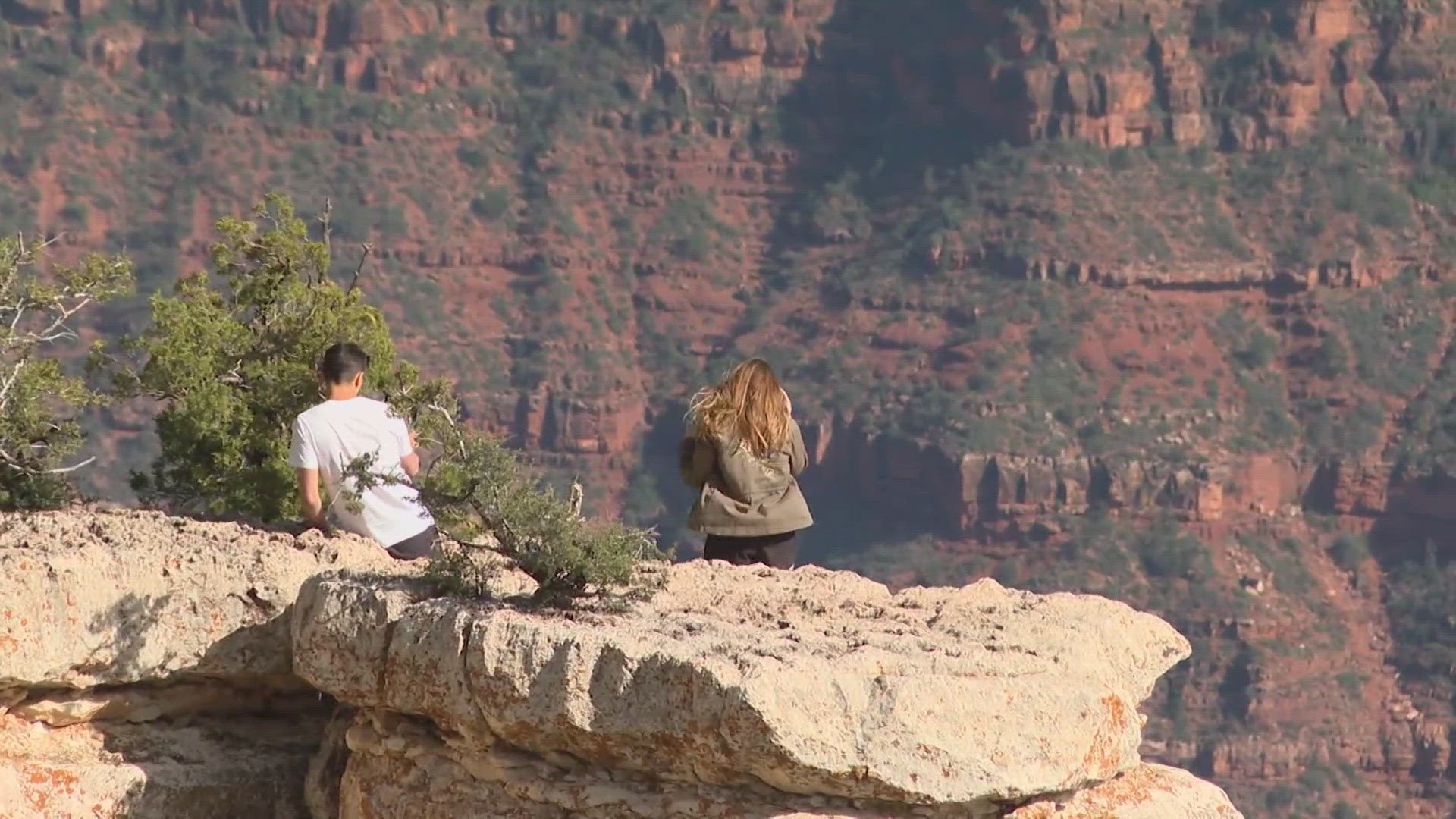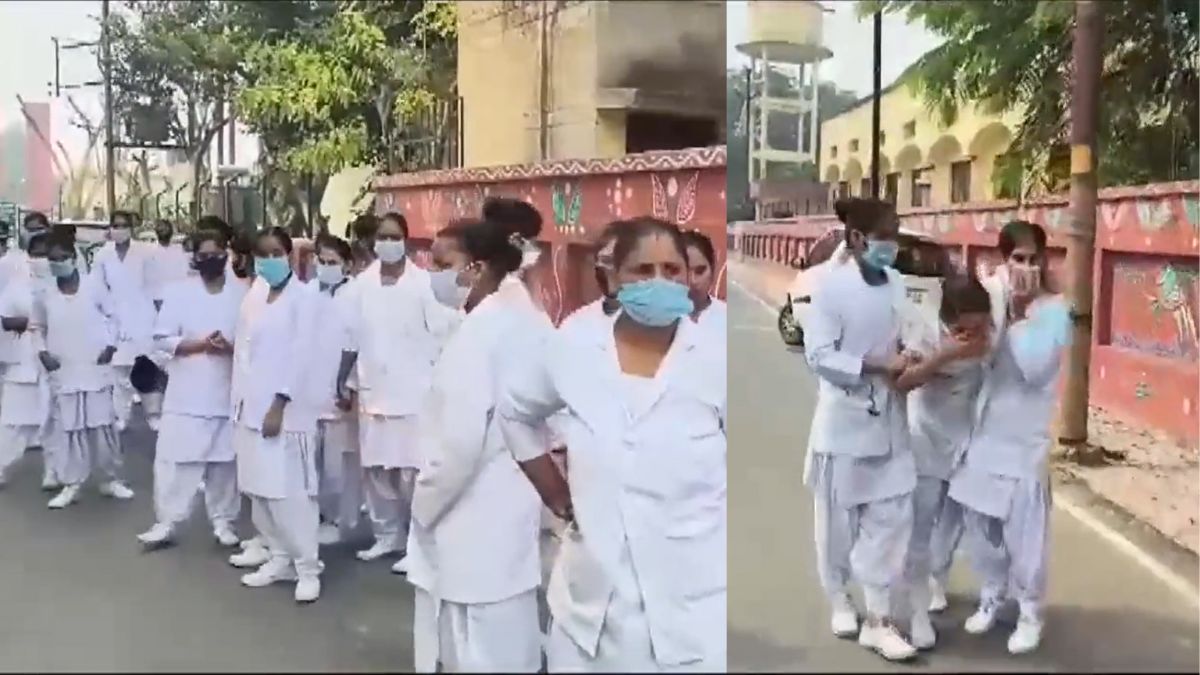When it comes to natural wonders, the Grand Canyon is an iconic symbol of breathtaking beauty. But recently, the phrase "Grand Canyon chlorine gas leak" has been making headlines, sparking concern and curiosity worldwide. This incident wasn't just a blip on the radar—it was a wake-up call for environmental safety and disaster preparedness. Whether you're a nature enthusiast, a concerned citizen, or someone who simply wants to stay informed, this article dives deep into the details of what happened and why it matters.
Picture this: you're standing at the edge of the Grand Canyon, marveling at its vastness, when suddenly, news breaks about a chlorine gas leak nearby. It sounds like something out of a disaster movie, right? But this isn't fiction—it's reality. The Grand Canyon chlorine gas leak has raised serious questions about infrastructure safety and emergency response protocols in one of America's most treasured national parks.
Before we dive deeper, let's address why this matters. The Grand Canyon isn't just a tourist destination; it's a vital part of our ecosystem, home to diverse wildlife and indigenous communities. Understanding the causes, consequences, and solutions surrounding the chlorine gas leak is crucial for protecting both people and the environment. So grab your hiking boots—or maybe just a cup of coffee—and let's explore this issue together.
Read also:Shea Briar Leak The Story Behind The Viral Sensation
What Happened at the Grand Canyon?
Initial Reports of the Leak
It all started with a routine maintenance check at a water treatment facility near the Grand Canyon. Workers noticed an unusual smell and quickly realized that something was off. Further investigation revealed a significant chlorine gas leak, which posed immediate health risks to employees and nearby residents. The situation escalated rapidly, prompting authorities to issue evacuation orders and activate emergency response teams.
Chlorine gas is no joke—it's highly toxic and can cause respiratory distress, eye irritation, and even fatalities if inhaled in large quantities. The fact that this happened near such a popular tourist destination added another layer of complexity to the situation. Authorities had to balance public safety with minimizing panic, ensuring that visitors and locals alike were informed without causing unnecessary fear.
Causes of the Chlorine Gas Leak
Infrastructure Failures
So, what exactly caused the leak? Investigations pointed to aging infrastructure as the primary culprit. The water treatment plant in question was built decades ago and hadn't undergone significant upgrades in recent years. Corroded pipes and outdated equipment contributed to the failure, highlighting a broader issue across many U.S. water systems.
- Aging pipes are prone to leaks and ruptures.
- Outdated equipment may not meet modern safety standards.
- Lack of regular maintenance exacerbates these problems.
Experts warn that similar incidents could occur elsewhere unless urgent action is taken to modernize critical infrastructure. This isn't just about the Grand Canyon—it's a national issue that demands attention.
Health Risks Associated with Chlorine Gas Exposure
Symptoms and Long-Term Effects
Chlorine gas exposure can lead to a range of health issues, from mild discomfort to life-threatening conditions. Short-term effects include coughing, chest tightness, and difficulty breathing, while long-term exposure may result in chronic respiratory problems and lung damage.
Here’s a quick rundown of potential symptoms:
Read also:Sophie Xdt Leak The Untold Story You Need To Know About
- Mild exposure: irritation of eyes, nose, and throat.
- Moderate exposure: coughing, wheezing, and shortness of breath.
- Severe exposure: pulmonary edema, chemical burns, and organ damage.
Authorities worked tirelessly to ensure that anyone exposed to the gas received prompt medical attention. Local hospitals reported treating several individuals for mild to moderate symptoms, but thankfully, there were no reported fatalities.
Environmental Impact of the Leak
Effects on Wildlife and Ecosystems
The Grand Canyon is home to countless species of plants and animals, many of which are already facing threats due to climate change and habitat loss. The chlorine gas leak added another layer of stress to this delicate ecosystem. While the immediate impact on wildlife was difficult to assess, experts worry about potential long-term consequences.
Chlorine gas can contaminate water sources, harm vegetation, and disrupt the food chain. For example:
- Fish and aquatic life in nearby streams may suffer from water contamination.
- Plants exposed to chlorine gas could experience stunted growth or die off.
- Animals that rely on these plants for food may struggle to survive.
Conservationists are closely monitoring the situation and advocating for stricter regulations to prevent future incidents.
Emergency Response and Evacuation Efforts
How Authorities Handled the Crisis
When disaster strikes, the speed and effectiveness of emergency response efforts can make all the difference. In this case, local authorities acted swiftly to contain the leak and protect those in harm's way. Evacuation orders were issued for nearby communities, and emergency responders worked around the clock to neutralize the threat.
Key steps taken during the response included:
- Sealing off affected areas to prevent further contamination.
- Distributing respirators and protective gear to first responders.
- Setting up temporary shelters for displaced residents.
While the response was largely praised for its efficiency, critics pointed out the need for better preparedness and communication systems to handle such crises in the future.
Lessons Learned from the Incident
Improving Infrastructure and Safety Protocols
The Grand Canyon chlorine gas leak serves as a stark reminder of the importance of maintaining critical infrastructure. It also underscores the need for robust safety protocols and regular inspections to prevent similar incidents. Experts recommend the following measures:
- Investing in modernizing aging water treatment facilities.
- Implementing stricter safety standards for hazardous materials.
- Training staff on emergency response procedures.
By learning from this incident, we can take proactive steps to safeguard both human health and the environment.
Public Reaction and Media Coverage
How the World Responded
News of the chlorine gas leak spread quickly, capturing the attention of media outlets worldwide. Social media platforms buzzed with updates and opinions, as people expressed concern for the affected communities and the Grand Canyon's fragile ecosystem.
Some key takeaways from public reaction include:
- Widespread support for affected residents and emergency responders.
- Calls for increased funding for infrastructure improvements.
- Debate over the role of climate change in exacerbating such incidents.
While the incident sparked fear and outrage, it also inspired calls for action and accountability.
Long-Term Solutions and Prevention Strategies
Building a Safer Future
To prevent future chlorine gas leaks, both at the Grand Canyon and beyond, we need to focus on long-term solutions. This includes:
- Upgrading water treatment facilities with state-of-the-art technology.
- Developing comprehensive emergency response plans.
- Encouraging community involvement in disaster preparedness efforts.
By working together, we can create a safer, more resilient future for everyone.
Data and Statistics: The Numbers Behind the Incident
Facts and Figures to Know
Here are some key statistics related to the Grand Canyon chlorine gas leak:
- Approximately 500 residents were evacuated from the affected area.
- Over 20 individuals sought medical treatment for chlorine gas exposure.
- Experts estimate that it will take months to fully assess the environmental impact.
These numbers highlight the scale of the incident and the urgency of addressing its root causes.
Conclusion: Moving Forward After the Leak
The Grand Canyon chlorine gas leak was a wake-up call for all of us. It reminded us of the importance of protecting our natural treasures and ensuring the safety of those who live and work near them. While the incident was alarming, it also presented an opportunity to learn and grow.
As we move forward, let's focus on implementing the lessons learned and advocating for change. Whether it's supporting infrastructure improvements, volunteering with conservation organizations, or simply staying informed, every action counts. So what are you waiting for? Share this article, start a conversation, and be part of the solution!
Table of Contents
- What Happened at the Grand Canyon?
- Causes of the Chlorine Gas Leak
- Health Risks Associated with Chlorine Gas Exposure
- Environmental Impact of the Leak
- Emergency Response and Evacuation Efforts
- Lessons Learned from the Incident
- Public Reaction and Media Coverage
- Long-Term Solutions and Prevention Strategies
- Data and Statistics: The Numbers Behind the Incident
- Conclusion: Moving Forward After the Leak


